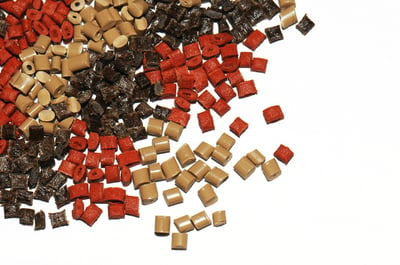Moisture affects the quality of the molded part in different ways, and the extent is determined by either the specific resin being processed or the purpose of the part. Improper or incomplete drying can create problems, either when the part is being processed or when the product is in use, or sometimes, both.
Drying plastics resin is done to reduce or eliminate problems caused by too much or too little moisture in plastic material as it is being processed. Most processors accept the need to pre-dry plastic resins, particularly hygroscopic resins, but many don’t understand the basics of resin drying.
There are 4 fundamental drying parameters for all polymers:
- Heat
The first fundamental drying parameter is heat. The pellet will not release its moisture if you don’t heat it. Hygroscopic polymers are strongly attracted to water. The water molecules are bound to the polymer chains. Heat weakens the forces bonding the water molecules to the polymer chains, causing the molecules to move powerfully. If the temperature is high enough, the force binding the molecules to the chains are reduced, which allows for free movement of the water molecules to move the drying process along.
- Dew point
The second fundamental drying parameter is dew point. Dew point is the temperature at which the air condenses. When the pellet is surrounded by the low vapor pressure of the dry air, it causes freed moisture molecules to move to the surface of the pellet.
- Drying time
The third fundamental drying parameter is drying time. Plastic pellets do not dry immediately. First, they must be heated to let water molecules move freely, then enough time must pass for the molecules to de-fuse to the hygroscopic pellet surface.
- Airflow
The fourth fundamental drying parameter is airflow, which carries heat or dry heated air to the material in the drying hopper. There must be a low dew point heated air forced over the material in order for the molecules of moisture to be detached from the chains and moved to the pellet surface where the airflow will carry the moisture away. Dry air volume must be sufficient enough to develop and maintain the desired temperature profile in the hopper.

To prevent defects, drying must be done properly in the molding or extrusion process. You can increase and optimize the molding times and extrusion rates by uniform drying to a low, consistent moisture level, maintaining a constant temperature, keeping the drying system in working condition, and using dryers that offer the latest drying technology to avoid temperature or point spikes, or any other issues that could arise.


